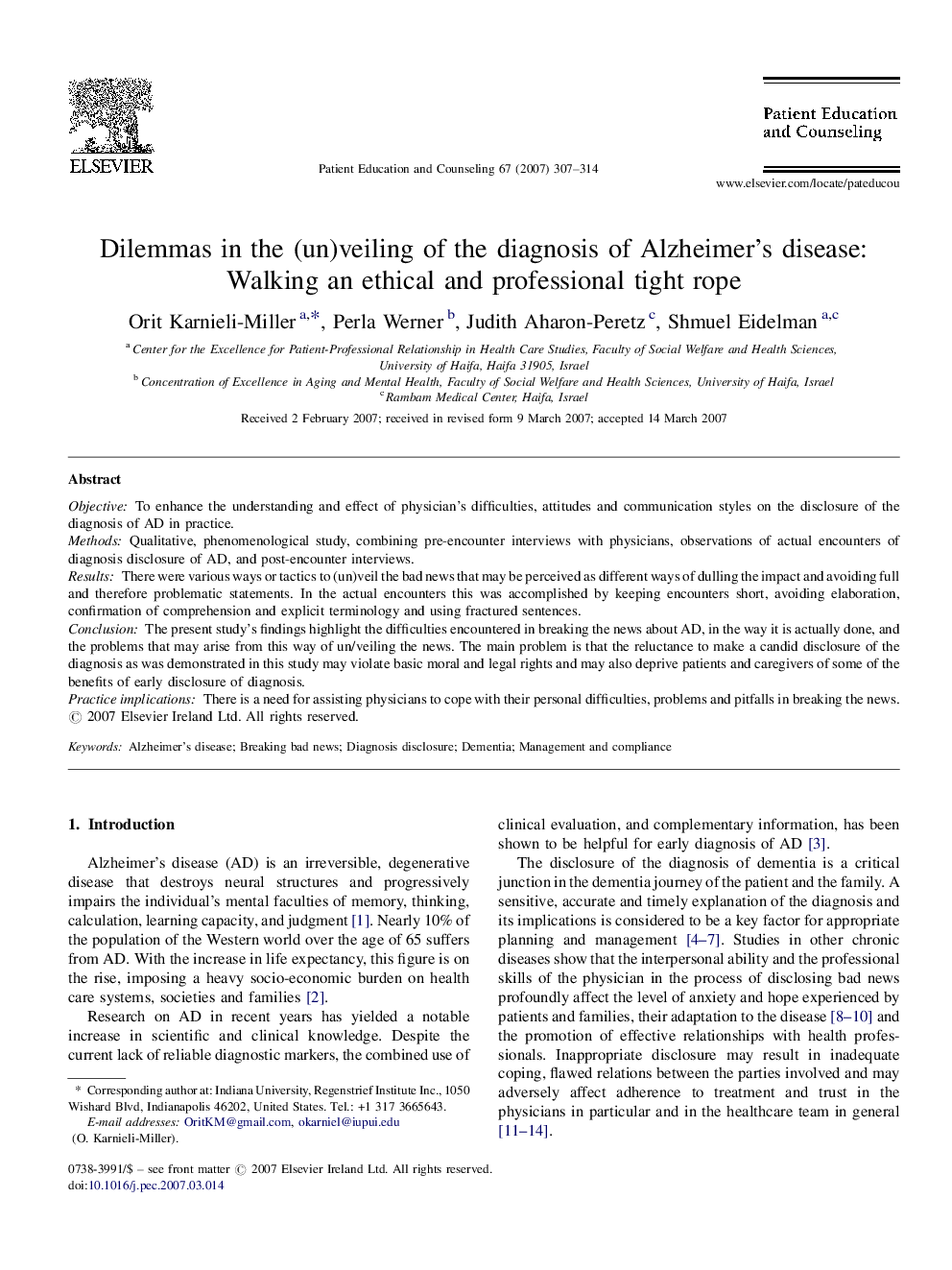| Article ID | Journal | Published Year | Pages | File Type |
|---|---|---|---|---|
| 3815517 | Patient Education and Counseling | 2007 | 8 Pages |
ObjectiveTo enhance the understanding and effect of physician's difficulties, attitudes and communication styles on the disclosure of the diagnosis of AD in practice.MethodsQualitative, phenomenological study, combining pre-encounter interviews with physicians, observations of actual encounters of diagnosis disclosure of AD, and post-encounter interviews.ResultsThere were various ways or tactics to (un)veil the bad news that may be perceived as different ways of dulling the impact and avoiding full and therefore problematic statements. In the actual encounters this was accomplished by keeping encounters short, avoiding elaboration, confirmation of comprehension and explicit terminology and using fractured sentences.ConclusionThe present study's findings highlight the difficulties encountered in breaking the news about AD, in the way it is actually done, and the problems that may arise from this way of un/veiling the news. The main problem is that the reluctance to make a candid disclosure of the diagnosis as was demonstrated in this study may violate basic moral and legal rights and may also deprive patients and caregivers of some of the benefits of early disclosure of diagnosis.Practice implicationsThere is a need for assisting physicians to cope with their personal difficulties, problems and pitfalls in breaking the news.
